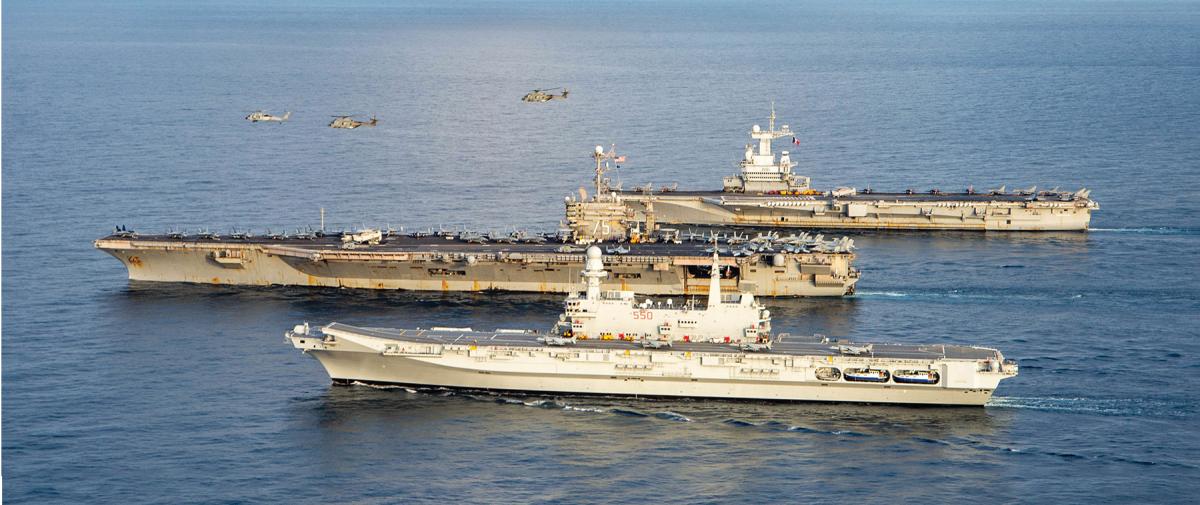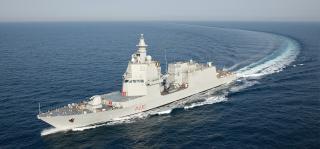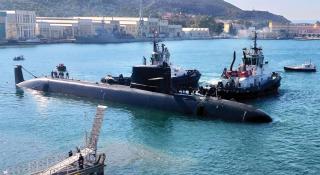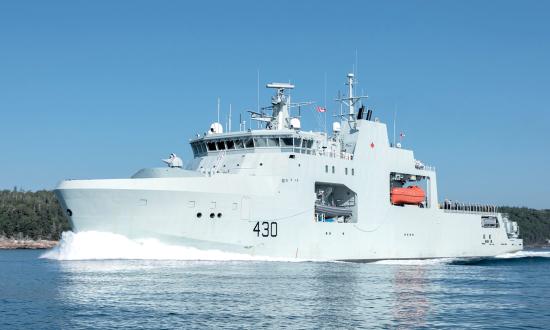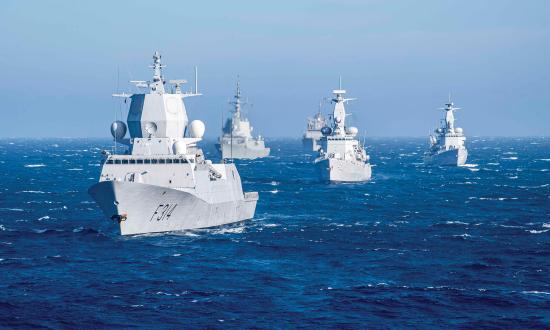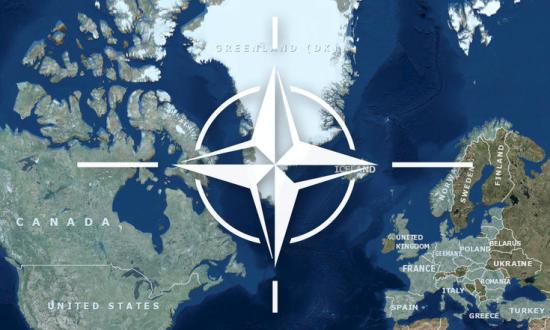Navies of the North Atlantic Treaty Organization (NATO) typically have served quietly, protecting the peace behind the scenes and training for operations dutifully in the background. During the past year, alliance partners continued organizing together, training together, and equipping their forces together for interoperability. Yet the alliance’s unparalleled maritime capabilities and proficiency often have been overlooked, underfunded, and all too frequently taken for granted, along with long-held assumptions of a peaceful Europe. With Russia’s 2022 invasion of Ukraine, Europe has been reminded that NATO’s core purpose remains important, and alliance readiness is directly linked to the commitment of its member nations.
Belgium and the Netherlands
Belgium and the Netherlands are partnering to replace their long-serving mine countermeasures (MCM) ships and Karel Doorman–class frigates. By 2030, the two navies are each expected to take delivery of two new 6,000-ton antisubmarine warfare frigates and six 2,600-ton MCM ships. The Netherlands also is working with Germany to develop a class of future air-defense frigates for service beginning in the early 2030s. The four Dutch Walrus-class submarines are slated for retirement by 2032. The replacement program is facing contract delays, which may result in a service-life extension for the aging boats.
Bulgaria
Two 295-foot, 2,300-ton Multipurpose Modular Patrol Vessels (MMPVs) based on the German OPV 90 design are planned for the Bulgarian fleet by 2026. Bulgaria also is planning to add additional minelaying capabilities to its amphibious fleet and is hoping to acquire secondhand submarines from an allied nation in the near future.
Canada
Canada’s surface ship recapitalization efforts continue. The 338-foot Arctic and offshore patrol ships (AOPS) Harry DeWolf and Margaret Brooke commissioned in 2021, and all six AOPS are expected by 2026. Fifteen 7,800-ton next-generation frigates based on the British Type 26 are to be delivered from the 2030s into the 2040s and will be fitted with the SPY-7 active electronically scanned array radar. Four large new tugs are planned for delivery by 2024.
Estonia
Two 57-foot fast patrol boats, the Risto and Roland, were delivered to Estonia in fall 2021 for coastal security operations. By January 2023, vessels from Estonia’s Police and Border Guard are to be transferred to the navy along with many of their missions, such as maritime situational awareness, sea-border surveillance, and pollution control. Maritime rescue operations are expected to remain with the Police and Border Guard.
France
The seventh French Aquitaine-class frigate, the Alsace, was commissioned in 2021 under the Franco-Italian Frégate Européenne Multi-Mission (FREMM) program. Sister ship Lorraine began sea trials early in 2022. These ships are tailored for antiair warfare and are the final French frigates in the class. Construction began on the Amiral Ronarc’h in December 2021. She is the first of six 4,500-ton frigates for defense and intervention planned for delivery between 2024 and 2030. The Auguste Benebig, the first of five overseas patrol vessels, was launched in October 2021 as part of the POM (Patrouilleur d’Outre-Mer) effort. The 1,300-ton, 262-foot ships will operate from France’s Pacific territories once they begin joining the fleet in 2023. France’s second 4,500-ton Suffren-class nuclear-powered attack submarine (SSN), the Duguay-Trouin, is slated for delivery in late 2022. Six of the SSNs are planned by 2030. Operationally, the French nuclear-powered aircraft carrier Charles de Gaulle and her strike group, along with a full carrier air wing, sailed to the Mediterranean Sea in early 2022 for multinational carrier exercises with the USS Harry S. Truman (CVN-75) and Italian carrier Cavour in a show of NATO unity and power projection.
Germany
Germany’s fourth and final 7,200-ton F125 Baden-Württemberg–class frigate, the Rheinland-Pfalz, was delivered in January 2022. Construction continues on a second batch of five K-130 Braunschweig-class corvettes, which will join the five existing Batch 1 corvettes beginning in 2023. The next-generation Type 126 multimission frigates will be built in cooperation with the Netherlands. Plans call for four Type 126 frigates to enter service between 2028 and 2031, with an option to acquire two additional units. Two new Type 212CD submarines, to be built in cooperation with Norway, will be larger than the existing Type 212A class and are expected to begin entering service in 2032. Thirty-one NH90 Sea Tiger shipboard antisubmarine helicopters will begin replacing aging Super Lynx Mk-88As from 2025. Germany also ordered five P-8A Poseidon maritime patrol aircraft for delivery beginning in late 2024.
Greece
Greece has plans to buy three Belharra-class frigates from France. The new ships are similar to France’s FDI frigates (Amiral Ronarc’h class), with delivery scheduled by 2026. The Hellenic Navy requires up to five new corvettes for its surface fleet and also is examining acquisition of secondhand frigates and refurbished MCM ships from partner nations to round out its naval capabilities.
Iceland
In fall 2021, Iceland welcomed the offshore patrol vessel Freyja into its coast guard. The South Korean–built vessel previously provided commercial offshore services. The 282-foot Freyja replaced Iceland’s fisheries protection ship Týr.
Italy
The first Italian PPA (Pattugliatore Polivalente d’Altura) ship, the Thaon di Revel, was delivered in March 2022. At least seven of the multipurpose 469-foot offshore patrol ships are planned through 2026. The ships can be fitted for a variety of missions ranging from light patrol to full naval combat duties. In October 2021, construction began on the tenth and final Carlo Bergamini–class frigate in the FREMM program, which is expected for delivery in 2025. Work has begun on the first of at least two new Type 212 air-independent propulsion (AIP) equipped submarines. Deliveries of the near-future submarines are set to begin in the late 2020s. In March 2021, Italy took delivery of the large logistics support ship Vulcano. The 633-foot replenishment vessel displaces 27,000 tons fully loaded and has extensive medical facilities. Sea trials began in August 2021 on the 33,000-ton big deck amphibious ship Trieste, which is expected for delivery in 2022. The Trieste is fitted with a well-deck for landing craft and can transport a fully equipped battalion of troops. Her flight deck can operate helicopters and F-35B short-takeoff and vertical landing (STOVL) strike fighters, 30 of which are being purchased by Italy. The 27,000-ton aircraft carrier Cavour and her air wing of strike fighters and helicopters were deployed to the Mediterranean and Ionian Seas early in 2022 as part of a heavy NATO presence in the region.
Latvia
Latvia is modernizing some of its former Dutch Alkmaar-class minehunters, known locally as the Imanta class. At least three units are undergoing enhancement, including new sensors and the ability to operate advanced autonomous underwater vehicles. A new class of replacement mine warfare vessels is under consideration for the 2030s.
Norway
Norway is purchasing four new AIP-equipped Type 212CD submarines in partnership with Germany. The 240-foot submarines will begin entering service in 2029. The first of five Norwegian P-8A Poseidon maritime patrol aircraft was delivered in November 2021, with the rest expected by the end of this year.
Poland
Poland’s second Kormoran II-class mine countermeasures ship, the Albatros, conducted sea trials during 2021 and is expected to enter service in 2022. A sister ship is expected for delivery in 2023, and three more are planned. Three new domestically built light frigates are planned by 2034 for coastal defense under the Miecznik program.
Portugal
Portugal announced plans last year to acquire six additional 1,600-ton Viana do Castelo–class patrol ships, joining four sister ships already in service. Deliveries are set to begin in late 2023.
Spain
Spain’s Isaac Peral–class submarines are nearing operational service under their long-delayed S-80 program. The first of the four AIP-capable submarines was launched in April 2021, with delivery expected in 2023. Construction began this year on the first of five new 6,100-ton multipurpose F-110 frigates to replace the Santa Maria/Oliver Hazard Perry class. Delivery is scheduled between 2026 and 2031.
Turkey
Turkey’s large 27,000-ton amphibious assault ship Anadolu began sea trials early in 2022 and is expected to serve as fleet flagship and make extensive use of unmanned aircraft. The first of four 3,000-ton Istanbul-class frigates was launched in January 2021 and is expected for delivery in 2023. Four 8,500-ton next-generation air defense destroyers are now envisioned as part of the Turkish TF-2000 program, which could see destroyer deliveries in the late 2020s or early 2030s. The first of Turkey’s six planned Reis-class submarines (Type 214TN) is expected for delivery by the end of 2022, and five additional units are planned by the end of the decade.
United Kingdom
The aircraft carrier HMS Queen Elizabeth embarked both British and U.S. F-35B STOVL strike fighters on her initial seven-month operational deployment to the Indo-Pacific. The 49,000-mile voyage, which included combat operations against ISIS targets in the Middle East, concluded in December 2021. Sister carrier HMS Prince of Wales set sail in early 2022 to lead NATO’s Maritime High Readiness Force international task group to the Arctic for training and exercises amid heightened tensions with Russia. The Royal Navy surface fleet is amid an important frigate recapitalization effort. Eight 6,900-ton Type 26 City-class ASW frigates are planned for service from the mid-2020s. The first unit, the Glasgow, was launched in April 2021 and is expected to join the fleet in 2026. Five 5,700-ton Type 31 Inspiration-class general-purpose frigates also are planned for service by the end of the decade. Construction began on the first Type 31 frigate in September 2021, and she will be named HMS Venturer. Five next-generation Type 32 frigates are planned for service in the 2030s, though the class is in early development. The Royal Navy’s fourth Astute-class nuclear-powered attack submarine, HMS Audacious, was commissioned in September 2021. All seven SSNs are expected to enter the fleet by 2026. Four Dreadnaught-class 17,000-ton nuclear-powered ballistic missile submarines are planned for the 2030s.



